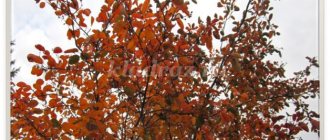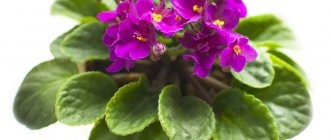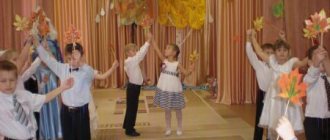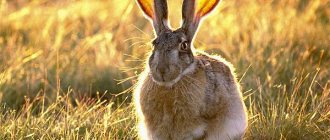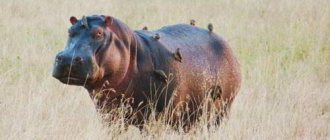Summary of the open lesson of the Federal State Educational Standard for the preparatory group on the topic: Autumn
Summary of the open lesson of the Federal State Educational Standard “In the footsteps of autumn”
Goal : to consolidate children’s ideas about the characteristic signs of autumn and autumn phenomena. Expand children's knowledge about the phenomena of living and inanimate nature: why leaves turn yellow and fall and how they fall. Learn to establish cause-and-effect relationships. Objectives: • Develop children’s ability to name the signs of autumn, changes in nature, using figurative words and expressions, attention, coherent speech (vocabulary: petiole, edge, chlorophyll) • Strengthen the ability to establish connections between signs in nature and the ability to defend their point of view, do conclusions (reason, prove, build proposals, establish cause-and-effect relationships) • Continue to develop memory, attention, thinking through games and gaming exercises. • Investigate the natural phenomenon of leaf fall, leaf structure, and experimentally draw a conclusion about the presence of green matter in the leaves. • During the experiment, show children the dependence of the flight of a falling leaf on its size and shape. • Cultivate curiosity and the ability to interact with each other. Techniques: solving a problem situation, explanations, actions of a motor nature Used forms of organizing children's cognitive activity: group, subgroup and individual Equipment and materials: Bell, gel ball, secret letter, chest, route map, mnemonic table-riddle, maple leaves with signs and proverbs , magnifying glasses, microscope, two boxes (with dry and fresh leaves), pieces of white fabric folded in half, wooden cubes, real leaves large and small, of different shapes, boxes, milk, food coloring, liquid soap, magic bag, brushes, gouache , fruits and vegetables from papier mache. Preliminary work: • While walking, watch the leaves fall from the trees. • Collect leaves of different shapes and colors. • Conversations about autumn; • Reading works of art: “Falling Leaves” by I. Sokolov-Mikitov, “Forest in Autumn” by A. Tvardovsky, poems about autumn by A. S. Pushkin, A. Pleshcheev, A. I. Bunin; • Learning poems and sayings about autumn; • Singing songs about autumn and listening to music; • Examination of illustrations and photographs depicting autumn nature; • Drawing in classes on fine art activities and independent artistic activities of various trees; • Working with plasticine and applying it to the base (plasticineography); • Observation of trees while walking; • Crafts made from natural materials; Expected result: Children participate in research with interest, observe, and draw conclusions. They know how to reason, prove, build a proposal, establishing cause-and-effect relationships. Actively and kindly interact with adults and peers in solving gaming, educational, and creative problems. Teacher - (the teacher stands at the window) and rings the bell: - My bell is ringing, ringing And the guys gather around All the children have gathered around You are my friend and each other Let's hold hands together And smile at each other (close your eyes 1,2,3 - magic come quickly!!!) (a ball flies in, not a string of letters written with lemon juice) The teacher catches the ball and is surprised. Wow, what is this? -Children offer options for action. (Let's see) -The teacher is some kind of blank slate. I can not see anything. - well, what could it be? (Children's answer, maybe this is not just a blank sheet of paper, but a secret letter?) Educator - Do such letters really exist? Children's answer - Yes, such letters can be written with secret ink (lemon or starch) Educator - How can you find out what is written in it? The children's answer is to dilute iodine in water and lightly moisten the letter with a brush. Teacher - we have some water. Children's answer - Let's check? (the child wets the letter with iodine water). The inscription appears (CHEST) Educator - Look, something appears. Wondering what this is? Children's answer - (children read) Educator - it turns out, guys, this is a letter with a secret. Do you understand what you need to find? Educator - (Creating a problem situation.) Children find a chest, open it and take out a card, but do not know who this card is from. (at the bottom of the chest they find a mnemonic table that will tell who the cards are from) (Guessing the riddle using the mnemonic table). Educator I know, I know in advance, you, savvy people. Guess, guys, an interesting riddle. Teacher - (reads the letter from autumn) Dear children! Some say that autumn is ending, others say that winter has already arrived. I do not know what to do. How should I decorate my dress? Please advise. I can’t understand whether autumn is ending or not? I just ask you to provide convincing evidence, and the map will help with this. Educator: This question is very interesting. What did you guys decide? Children's answer - (let's go look for evidence) Stop No. 1 (a yellow leaf is shown on the map, children find it, take a leaf.) Assignment: name the signs of autumn that determine the time of year. -the day is shorter and the night is longer; -Leaves on trees and bushes turn yellow, they fall, and leaf fall begins. -the sky is gray, gloomy; -it rains often; -migratory birds fly south; -wild animals make provisions for the winter, insulate their fur coats, and some go into hibernation; — people wear demi-season clothes; -harvest vegetables, fruits and grains; - the autumn months are called September, October, November: 1. September - fieldfare. Why do you think it was called the fieldfare? (because rowan appears at this time). 2. October is a deciduous month (because the leaves fall). 3.November – winter road (it becomes cold, like in winter). Educator: You are watching the weather forecast on TV, the announcer talks about air temperature, wind direction, precipitation. Precipitation? What it is? (rain, snow, fog). Educator: Children, how can you find out what the weather will be like? (watch TV, listen to the radio, read the thermometer). Stop No. 2 (the map shows a red leaf, children find it and take a leaf.) Children name the signs of autumn that determine the weather: - Rare clouds - it will be clear and cold. -A lot of rowan for rainy autumn and cold winter. -Migratory birds fly high in the fall, so there will be a lot of snow, and low - so there will be little snow. -Birch leaves begin to turn yellow from the top - expect early, and if below, late winter. -Warm autumn means a long winter. -The hares' fur has turned white - winter is coming. -If there are a lot of nuts, but no mushrooms, the winter will be snowy and harsh. - Large ant heaps - for a mild winter. -In autumn bad weather there are seven weather conditions outside. -Squirrels make a large supply of nuts - wait for a cold winter. Educator: Children, you wonderfully named many interesting signs that allow you to predict the weather. Stop No. 3 (the map shows an orange leaf, children find it and take a leaf.) Children call autumn sayings: -Spring is red with flowers, and autumn is with pies. -Spring is red with flowers, and autumn with sheaves. -Autumn is the time to harvest. -The berry is red, but it tastes bitter. -September smells like apples, October smells like cabbage. -In autumn, the sparrow is rich. -Spring is red with flowers, and autumn with pies. — In November, winter fights with autumn. -In autumn, a spoonful of water and a bucket of dirt. Educator: - Well done guys, you know a lot of signs of autumn. Back massage “Rain” The rain is running on the roof - bom, bom, bom! (clap their palms) On the cheerful ringing roof - bom, bom, bom! (tapping fingers) At home, sit at home - bom, bom, bom! (beat with fists) Don’t go out anywhere - bom, bom, bom! (rubbed with the edges of the palms) Read, play - bom, bom, bom! (they rub their shoulders) And when I leave, then go for a walk - bom..bom..bom.. (stroke with palms) (turn 180* and repeat the massage) - After the rain, look, mushrooms have grown in the forest. Educator: - I walked past our site, it’s so beautiful there, the trees are in different colors - Didn’t you paint them? -Have you ever wondered why this beauty is not preserved? Why do the leaves turn yellow and fall off? And how do they fall? Children's answer: Leaves do not tolerate cold and wind well, which is why they fall off. Stop No. 4 (on the map there is a mushroom, children find, take and decide what they would like to find out. Research No. 1 (a magnifying glass and a leaf are drawn), Research No. 2 (? Green leaf), Research No. 3. (large and small leaf), Research No. 4 (two boxes) Educator: What needs to be done to answer the question? Children's answers need to conduct experiments and experiments in the laboratory) Educator - What do you guys think, why does a tree need leaves? Children: Leaves not only decorate the tree, thanks to the leaves the tree breathes. Problematic question: Educator - Are you interested in knowing how the worksheet is structured? (Interesting) And in order to take a better look at what should be used? Children's answers: let's use a magnifying device - a magnifying glass and a microscope. (Magnifying glass, microscope, green leaves) Study No. 1 of the structure of a leaf using a magnifying glass Let's first consider the petiole - this is the part that connects the leaf to the branch. Now look at the top surface of the sheet. You see the veins - thin tubes. Which go from the petiole along the entire leaf, through these veins the leaves feed on moisture. The edge of the sheet is called the "edge". Examine the edge of the sheet. The tip of the leaf can be sharp or rounded. Look at it and tell me what it is like on your leaf. What conclusion can be drawn: The leaves have a petiole that connects the leaf to the branch and veins through which the leaves receive moisture. Problematic question: “Why do the leaves change color and fall off in the fall?” Educator: Why do the leaves turn yellow in the fall? The fact is that the leaves are green due to the green substance. Now let’s conduct an experiment and see this substance. Study No. 2 “Why is the leaf green?” Children suggest - Let's first find out why the leaves are green? Educator: Take a piece of paper and put it inside a piece of white fabric folded in half. Now use a wooden cube to firmly tap the leaf through the fabric. What did you discover during the experiment? (Children: Green spots appeared on the fabric). - This green substance from the leaf is called chlorophyll, it colors it green. (For this experiment, it is better to take succulent leaves of indoor plants). Children's conclusion: When autumn comes and it becomes colder and less sunny. This green substance gradually decreases until it disappears completely. Then the leaf changes its color and becomes yellow or... -What color are the leaves of trees in autumn? (Children: Orange, red, brown,). Study No. 3 . Take a magnifying glass and look at the base of the petiole, where it attaches to the branch. In autumn, a cork layer appears at the base of the petiole, in the place where it attaches to the branch. It, like a partition, separates the petiole from the branch. A light breeze blows and the leaves fall. Children's conclusion: In autumn, leaves fall off easily because a cork layer appears at the base of the petiole, which separates the petiole from the branch. Experiment “How Leaves Fall” During your walks, you noticed that leaves fall from trees in different ways. Let's conduct an experiment in order to find out which leaves fall quickly and which slowly, and which leaf is the most beautiful to spin. To do this, take a sheet of paper in your hand and stand up. Raise your hand with the leaf up and release the leaf from your fingers. Educator: While the leaf was flying, what did you notice? Children's answer (whether it fell quickly or slowly, flew straight down, or spun) What conclusions can be drawn from this experiment? Children's conclusion: Large leaves fall more slowly and hardly spin. Small leaves fall faster and spin more). Study No. 4 What happens to fallen leaves? Children's answer: They dry out. Would you be able to identify by ear the rustling of dry and newly fallen leaves? (Yes) Children take the boxes and determine by ear which ones contain dry and which ones have not dried leaves. Children's conclusion: Dry leaves rustle more. Stop No. 5 (magic bag) Educator: Along the gilded road, Autumn is coming to visit us. For boys and girls She brings a generous gift What kind of gift? (harvest) The children find a bag of papier-mâché. Children sit on mats. - Hush, hush, silence. A fairy tale has come to visit us. You guys don't make noise, don't scare away the fairy tale for us! Once upon a time there was a sorceress, and her name was Autumn. She was powerful and capricious. She often changed her mood. In a magic bag (the teacher shows a handbag decorated with yellow leaves) she kept her main magic tassel; the teacher takes out from the bag a large, soft tassel entwined with a gold ribbon). It was the magic brush that helped her create many miracles. How beautifully Autumn paints the gifts, but we forgot our brushes and the gifts remained undecorated. Educator - I don’t know what to do? Do you want to become wizards? For this we will need brushes from a magic bag, white liquid and drops of autumn. Where can we find this? Children find a table with milk in saucers, food coloring, and liquid soap. Children drop a drop of red and yellow dye into the milk with a pipette. dip the brush into the liquid soap and watch as the paints begin to move and mix on their own. Children are encouraged to color it themselves. (children color papier-mache for autumn) Educator: You guys are great, you have so much knowledge about autumn. You have collected a lot of signs of autumn, what should we do with them? Children's answer: Give them to autumn. Children attach leaves with signs to their autumn dress.
We recommend watching:
Notes on educational activities for children of the senior group Notes on literacy lessons in the preparatory group Notes on FEMP in the preparatory group. Numbers from 1-8. Solving the simplest problems Plan - outline of GCD in the preparatory group for school
Similar articles:
Summary of GCD in the preparatory group on the topic: Professions
Lesson notes for the preparatory group. My family
Lesson notes for the preparatory group. Primitive people
Lesson notes for the preparatory group. Tolerance
Lesson summary for kindergarten on the topic “Human Rights”. Preparatory group
